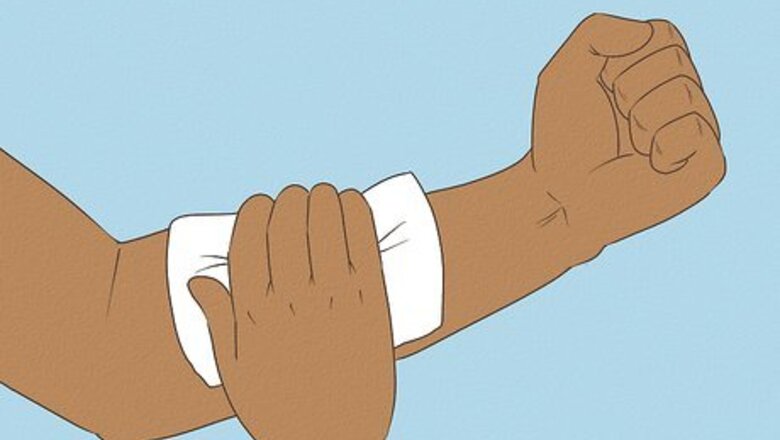
views
Cleaning the Wound
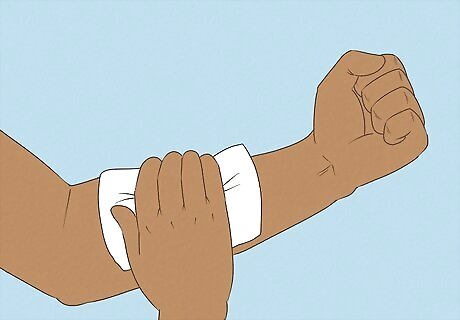
Apply pressure to stop the bleeding. Try not to panic if you see a lot of blood because you can help stop the bleeding. Quickly check the wound for protruding debris, but don't remove anything that cannot be easily removed. Then, place a sterile bandage or a clean cloth over the open wound, being careful to avoid any protruding debris if you can. Press down on the bandage or cloth evenly to apply pressure to the wound. Wrap a cloth or another bandage around the wound to keep the pressure applied. Use what you have on hand. Once the bleeding is under control, you can clean the wound or help the person get treatment from a doctor.
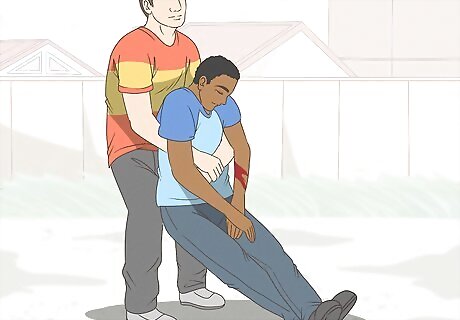
Move the victim to safety. Before you start to treat the wound, move the injured person away from any area where they could sustain further injury. For example, if the victim is wounded from falling down a steep slope, move them away from the slope before beginning first aid. This will keep you and the victim from sustaining further injuries while you treat the wound.
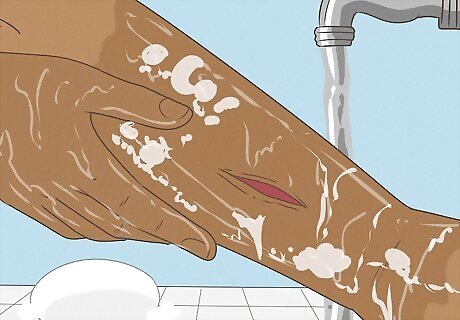
Rinse the wound with water. It’s important to remove any dirt or other contaminants from the wound. Use a faucet or other water source to rinse the wound. If you have soap nearby, wash the skin around the wound as well. Keep rinsing until all dirt, rocks, and twigs are out of the wound. If you’re in the woods or away from running water, you can pour water from a water bottle over the wound.
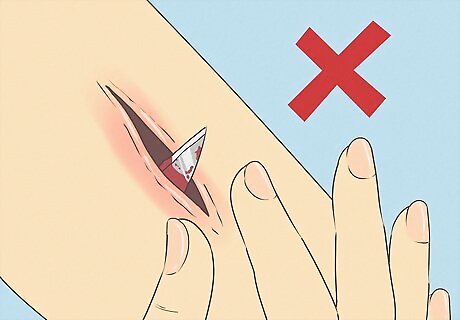
Do not remove large or deeply embedded debris. If the wound is serious and large pieces of debris (e.g. a tree branch) are deeply embedded, leave these objects in the wound. Pulling out objects of this size could increase blood loss and make the wound more serious. Large debris will need to be removed by a doctor once the victim has been taken to a hospital. Small debris (gravel-sized or smaller) can be removed with tweezers.
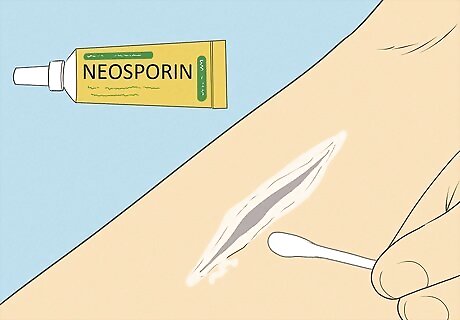
Apply antibiotic ointment if the wound is clean and free of debris. Use clean gauze or a sterile Q-tip to apply an antibiotic ointment (such as Neosporin) to the wound. Minor wounds and skin abrasions can be easily infected, and an antibiotic ointment will greatly reduce the risk of infection. Avoid putting your fingers directly in the wound, since this will cause the victim pain. Wear latex gloves if you can; if they’re not available, wash your hands with soap and water before and after your apply the ointment. If you don't have an antibiotic ointment, you can apply petroleum jelly to the wound until you can get proper care. Use steri-strips to pull the edges of the wound together, which can help it heal faster. If the bleeding is severe and you’re worried that the person may lose a serious amount of blood (or lose consciousness), skip this step and move directly on to stopping the blood flow.
Stopping the Flow of Blood
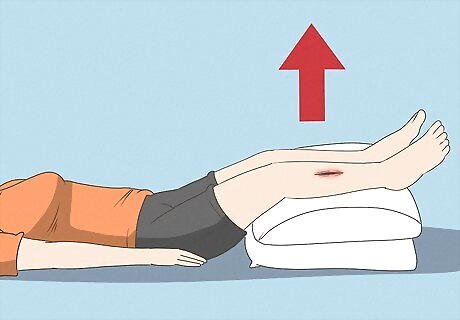
Elevate the wound above the heart. If the victim has been wounded on an arm or leg or on their head, prop their body in such a way that the wound is higher than their heart. This will help reduce the flow of blood to the wound and make the bleeding easier to stop. If the wound is located in an area that cannot be elevated above the heart—e.g., on the stomach or back—ask them to lie down.
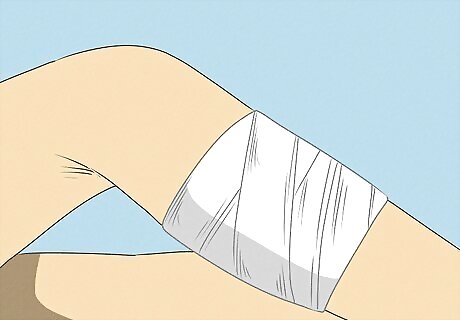
Place a clean cloth over the wound. Take a clean piece of cloth or sterile gauze and place it directly over the wound. This cloth will prevent dirt and further contaminants from entering the wound. The cloth or gauze will also allow you to put pressure on the wound without putting your hands directly in it. If the victim was wounded in the woods (or if you do not have a First Aid kit), you’ll have to improvise. A lightly soiled cloth is better than nothing, so use a towel, a shirt, or a pair of socks.
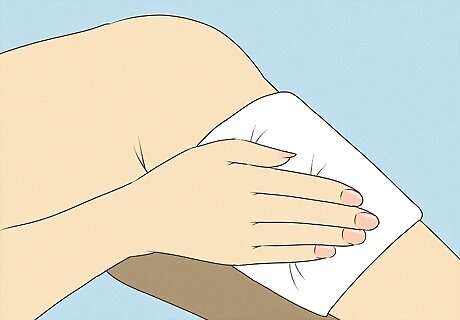
Apply direct pressure to the wound. Place both of your hands over the wounded area and press down firmly. This will reduce the flow of blood from the wound, and allow the blood to begin clotting. Depending on the severity of the wound, keep direct pressure on it for 10-15 minutes. Then check if the wound is still bleeding. The pressure may cause some discomfort to the victim. If it’s seriously painful, though, you’re probably pressing too hard.
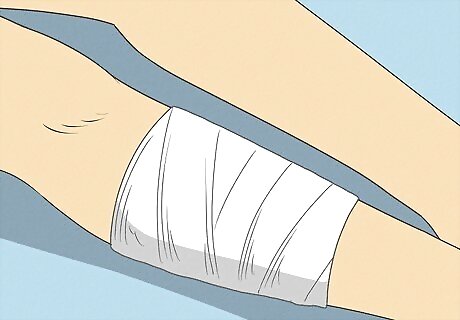
Add more cloths or gauze if the wound continues to bleed. If the first cloth or sheet of gauze becomes soaked with blood, apply a 2nd cloth directly over it. Continue applying pressure. If the bleeding continues, you may need to apply a 3rd and even a 4th piece of cloth. Keep pressure on the wound until the bleeding stops. Never remove a cloth that you have already applied. It’s crucial that the victim’s blood begins to clot and stop the bleeding. If you tear away a layer of gauze, this could re-open the wound.
Protecting the Wound and Seeing a Doctor
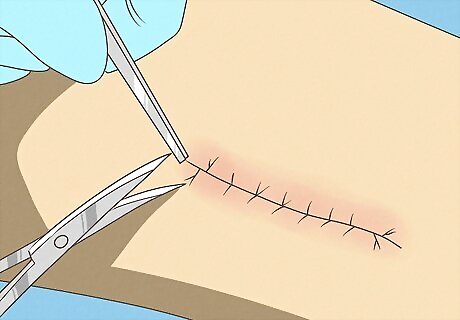
Take the victim to a doctor for stitches if the cut is deep or won’t close. The victim will likely need stitches if the wound re-opens, is gaping with edges that don’t meet, or is deeper than ⁄4 inch (0.64 cm). They’ll also need stitches if the wound is still bleeding after 15 minutes of applying pressure, or is deep enough to expose the adipose tissue. Take the victim to a doctor as soon as possible to stitch the wound up. Adipose tissue is a yellow, fatty layer under the skin. It looks like round little yellow bubbles.
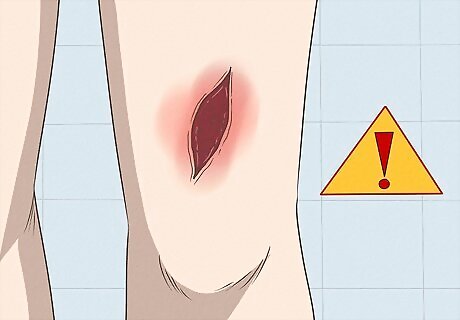
See a doctor if you find signs of infection. If the wound has become infected, the signs can show up 12-48 hours after the wound occurs. See a doctor as soon as possible if the wound shows signs of infection. When caught early, infection can be easy to fix. Signs of infection include: Redness, swelling, and skin around the wound that’s hot to the touch Discolored swelling in areas near the wound Pus mixed with blood draining from the wound An odd smell coming from the wound Severe pain from the wound Fever
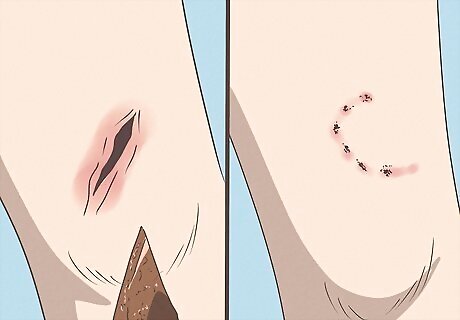
Head to a doctor if the wound was caused by rusty metal or an animal. If the cut came from a piece of rusty metal, the victim may need a tetanus shot from a doctor. They should also see a doctor if the wound was caused by an animal bite and the skin was broken. In the case of rusty metal, the doctor may ask the victim when they received their last tetanus booster. If the wound is clean and they received a shot in the last 10 years, an additional shot might not be necessary. However, if the wound is particularly tetanus-prone, the victim may need a shot regardless.
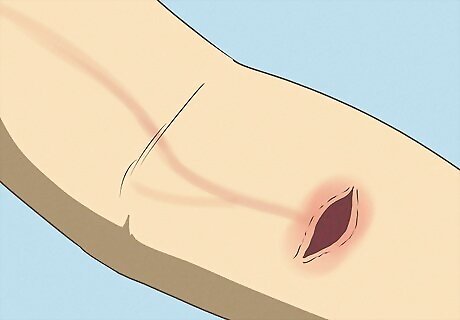
Go to the doctor if you see signs of blood poisoning. Look for a red streak leading from the wound towards the heart. If the wound is on the arm, the red streak will be going up the arm; if it’s on the leg, it’ll be leading upwards. Blood poisoning can be life-threatening, so go to the emergency room as soon as possible.
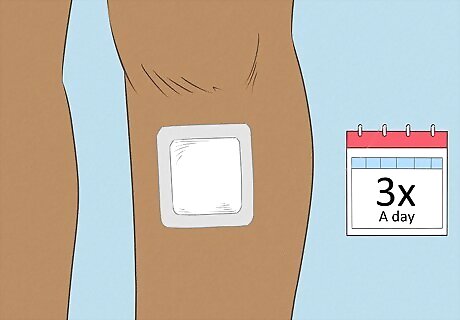
Bandage the wound and change the dressing 3 times a day. Once the flow of blood has come to a stop, the wound should still be protected and kept covered. If the wound is small, a Band-Aid should work fine. Otherwise, you may need to bandage the wound with a sheet of gauze and medical tape (which can be found in a First Aid kit).
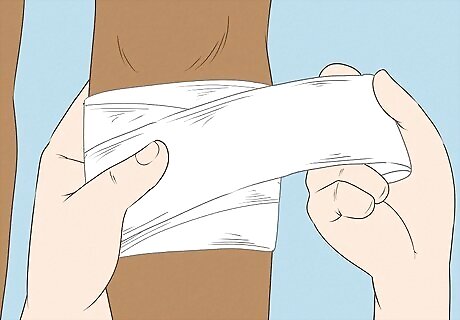
Change the bandage 3 times a day. Bandages and wound dressings need to be kept clean in order to discourage infection and to absorb any blood or fluid from the wound. Change the Band-Aid or gauze bandage 3 times a day, or whenever the bandage becomes wet or soiled. If bandages become dirty or absorb blood at a fast rate, the victim may need to visit the doctor again.



















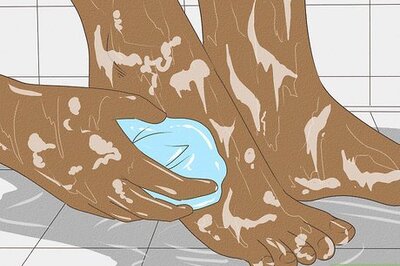
Comments
0 comment